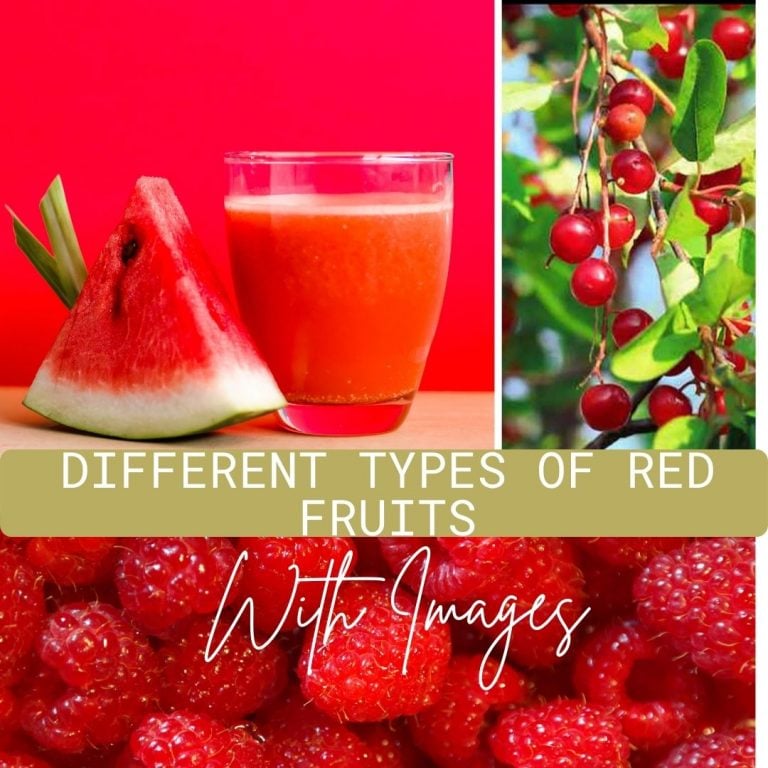25 Different Types Of Kiwi With Images
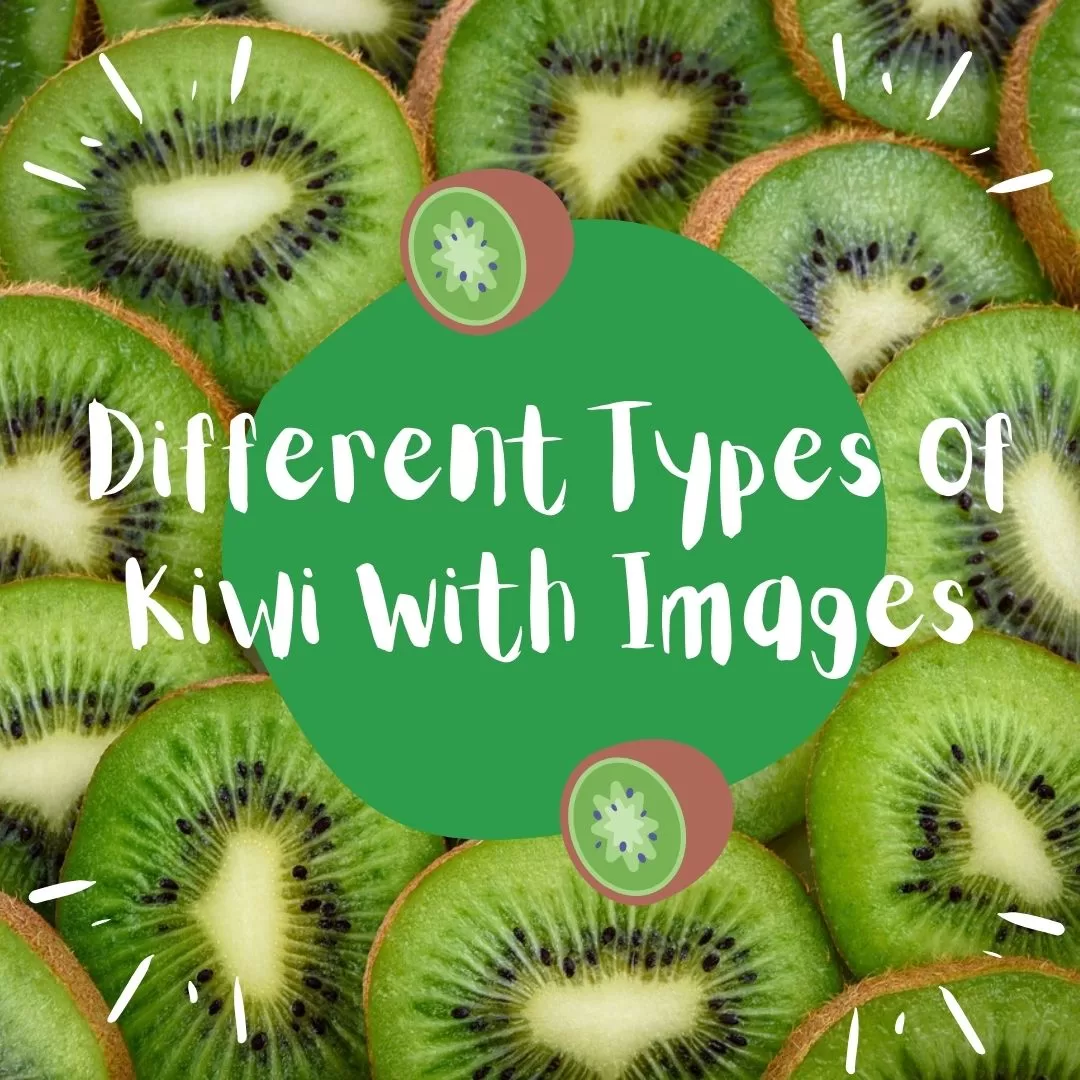
Kiwi Fruit originates from Northern China, a specie of the Actinidia Chinensis. There are different varieties of Kiwi out there and the taste of each type slightly differs from one another. this fruit may seem too little, it is quiet interesting to learn more about Kiwi Fruit. In this article, we will talk more about the different types of Kiwi.
Different Types Of Kiwi
There are three main types of Kiwi: Grocery Kiwi Fruit (Actinidia Deliciosa), Hardy Kiwi (Actinidia Arguta) and the Super hardy Kiwi Fruit (Actinidia Kolomikta). Three subtypes includes Yellow green flesh , Green flesh and Yellow flesh.
Kiwi is characterized as an egg-shaped little fruit. Its skin is thin, brown and sometimes fuzzy kiwi, therefore it is well-known for as “Fuzzy Kiwi Fruit). Average size of a Kiwi fruit ranges between 4cm to 7.5 cm with a width dimension that ranges from 3.5 cm to 5 cm. The inside flesh of the Kiwi Fruit can either be juicy, bittersweet and sometimes tender. Black and edible seeds is found inside the flesh of the kiwi.
All Kiwi vines have female plant and Male plant. Only Female plant bears fruit, though most Kiwi variety needs to be paired with a male plant for pollination. While male vines have male flowers while on the other hand, female vines have female flowers. Generally, for every eight female plants, there could only be one male plant. However, there is one Kiwi variety called Blake Kiwi do not need a male plant since it is self-fertile.
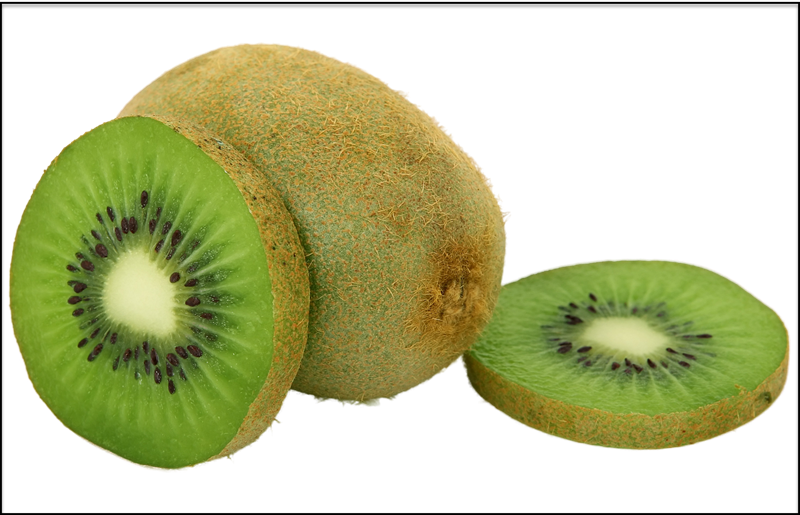
Green Kiwi
Green Kiwi is a type of kiwi that is the most popular and most common. It is characterized as an oval shaped fruit with brown and fuzzy skin. As the name itself present, the inside flesh of Green kiwi is color Green with noticeable black seeds that are edible.
Green Kiwi has a sharp taste but also sweet. It is known to be high in fiber content, for that healthy digestive system.
Kiwi Plants that bears Green Kiwi typically produces this fruit throughout the year, therefore its availability in the market won’t be a problem.
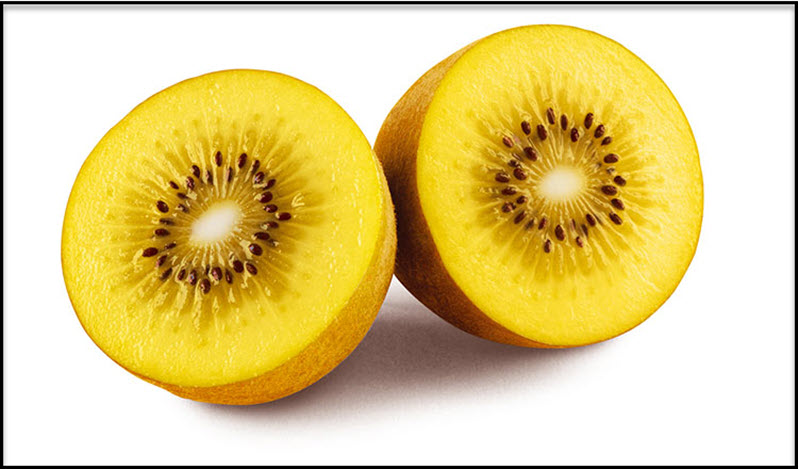
Golden Kiwi
Golden Kiwi is somehow related to Green kiwi. It is characterized as having only a few hair on its outside skin, therefore it appears to be smoother than Green Kiwi. The skin color appear to be Golden brown while the flesh appears to bright or intense yellow in color. This type of kiwi has few black seeds too.
When it comes to the taste, it typically tastes like a mixture between strawberry and mango, a more tropical taste. Golden Kiwi is often produced in growing seasons of between May to January.
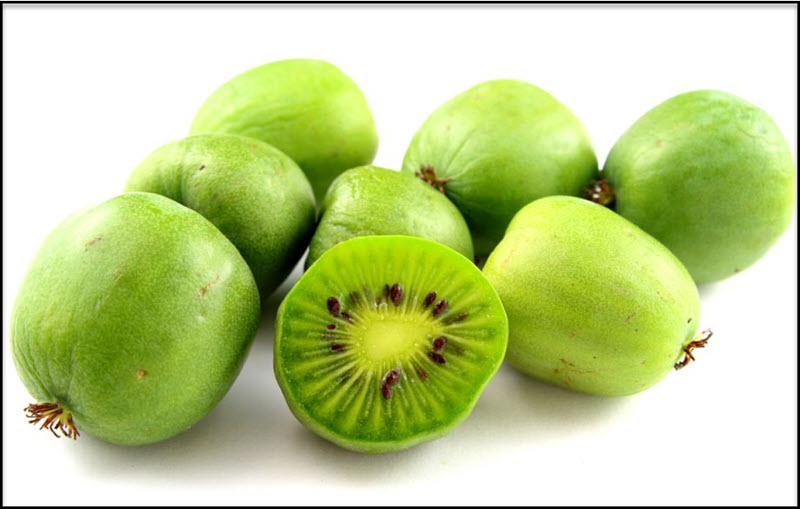
Hardy Kiwifruit
Hardy Kiwi or also known as Actinidia Arguta and Actinidia Kolomikta. These type of Kiwis are cold tolerant wherein they are mostly grown. But despite that, Kiwi plants still produce fruit that is sweet.
Hardy Kiwis are characterized as small fruit, so small that you can eat the entire fruit at once. Its skin is color green, and a smoother outer skin. In fact, Hardy Kiwi are known to be hairless with bright green flesh.
Kiwi plants produces kiwi fruits in its bearing season during the fall, but flowers tends to bloom during spring. Male and female plants are separated. Hardy Kiwi plants thrives well when exposed to full sun the entire day and a good soil draining pot.
There are different varieties of Hardy kiwis that includes Geneva, Dumbarton oaks and Issai.
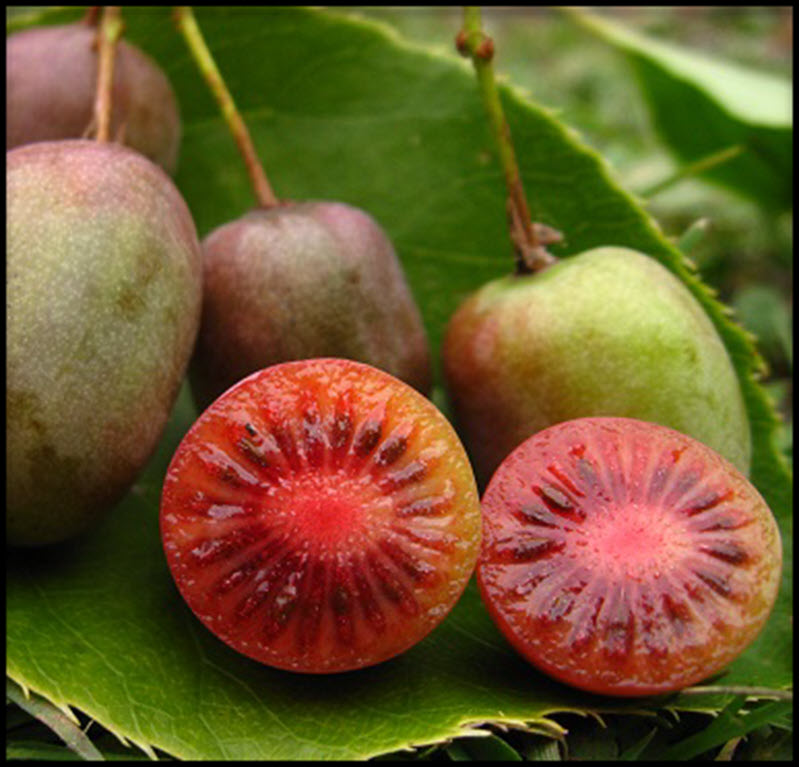
Ken’s Red Kiwi
Ken’s Red Kiwi or Actinidia Purpurea x Melanandra. It is a large kiwi that is sweet. The skin on the outside and the flesh on the inside are purplish red in color.

Arctic Beauty Kiwi
Arctic Beauty Kiwi or its latin name as Actinidia Kolomikta. It thrives well in extremely colder climates. Considered to be a super hardy kiwi. Arctic Beauty Kiwi plant has white and pink leaves.
Arctic Beauty Kiwis are small, in fact, considered to be the smallest kiwi amongst the rest of Kiwi Varieties.
When growing arctic beauty kiwi fruits, you need a male plant for pollination to occur, therefore fruits will be produced. A full sunlight and a considerable amount of water is a growing requirement for Arctic beauty kiwi fruits.
There are 6 sub types of Arctic beauty:
Pasha Male Arctic Beauty Kiwi
Also known as Variegated-Leaf Hardy Kiwi. It is the best pollinator to use for any Arctic Kiwi female plants. Although, this is a male kiwi plant therefore it does bear fruit.
September Sun Arctic Beauty Kiwi
This type of Arctic Beauty Kiwi bears large fruits that are sweet. Its leaves are colorful and appears to grow at least 6 to 8 feet. It is an ideal pair to bear fruit with Pasha Make Arctic Kiwi.
Emerald Arctic Beauty Kiwi
Emerald Arctic Beauty appears to have skin color that is lime green. It is a large fruit that has a sweet flavor and taste. For pollination, it is also best paired with Pasha Male Arctic Beauty Kiwi.
Frost Arctic Beauty Kiwi
This types of Arctic Beauty kiwi bears a bright and green fruit that are often medium to large in size with a sweet taste. For pollination, it is best paired with Pasha Male Arctic Beauty Kiwi.
Viktor Arctic Beauty Kiwi
This type is relatively bigger than the rest of Arctic beauty Kiwi varieties and can also be paired with Pasha Male Arctic Beauty Kiwi for pollination.
Red Beauty Arctic Beauty Kiwi
What’s unique about this type is that is has a red colored foliage. Usually grows during fall but starts to bloom in summertime. For pollination, it is best paired with Pasha Male Arctic Beauty Kiwi.

Fuzzy Kiwi
Fuzzy Kiwi has a Latin name of Actinidia deliciosa. It is considered to be a national fruit in China since its vine is a native to China’s southern region.
It is characterized as having a russet colored brown skin that is relatively similar to that as of a Russet Potato. It has brown hair covering the entire body of the fruit. Its flesh is juicy and has a good taste, and usually appears as bright green, though other can sometimes appear as having brown, yellow or white flesh. Also it is tasty, most of the time it is quiet acidic to taste.
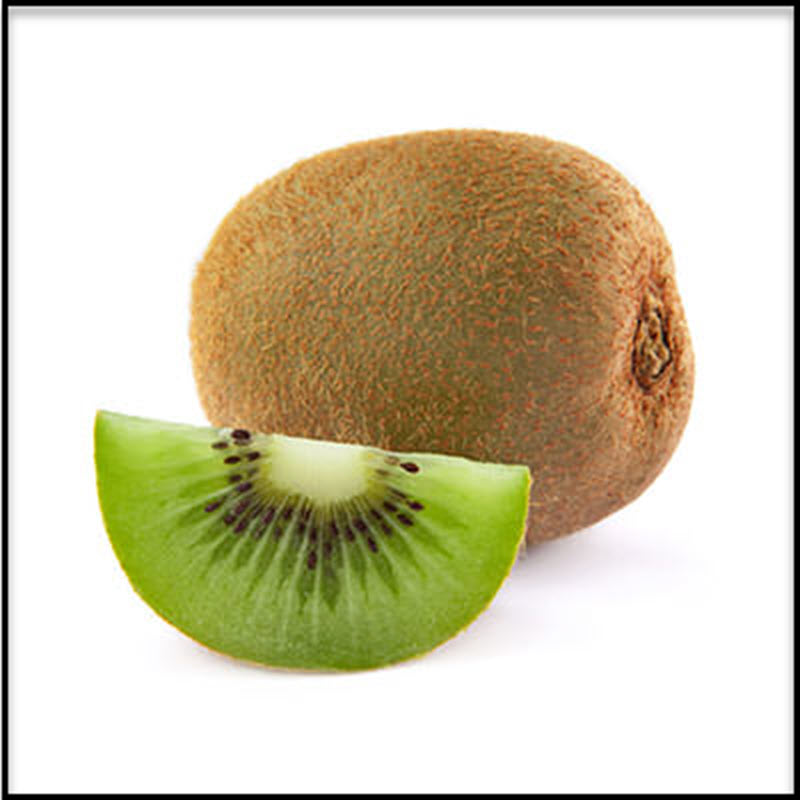
Hayward Kiwi
The hayward Kiwi variety is considered to be the most common fuzzy green variety. It has a uniquely round shape as compared to other Kiwi types. It appears to have a relatively many amount of hair on its skin. While the flesh is green colored while its center flesh appears to be white.
Considered to be the best amongst the different varieties of Fuzzy, and the tastiest too.

Blake Kiwi
In terms of size, Blake Kiwi has the same size as that of Hayward. It is characterized as having flesh that us lime green.
Blake Kiwi plant is also known for as a Self Fruiting or Self Fertile Kiwi
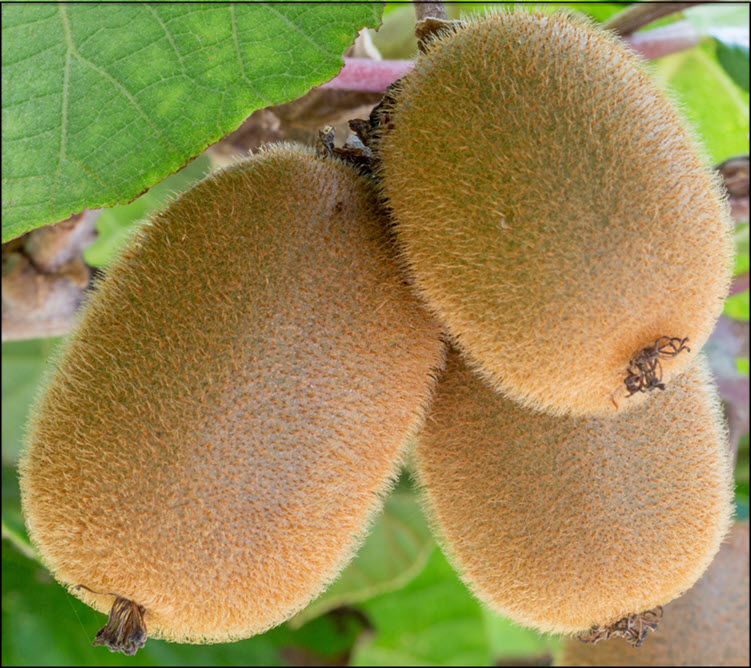
Saanichton Kiwi
Saanichton Kiwi appears to be a larger fruit but harder as compared to Hayward. Though it still needs a male plant to pollinate, the kiwi vines produces large flowers.

Abbott Kiwi
These are medium-sized kiwi and characterized that has brown skin with soft and long hair on the outside. Its flesh on the inside is light green in color that is sweet and flavorful.
During the months of October and November is when Abbott Kiwi usually ripens and can be eaten.
Allison Kiwi
A medium sized Kiwi with brown skin. Its flesh appears to be light green in color. It is considered to be one of the most popular Kiwi Variety, but not long before Hayward takes its place.
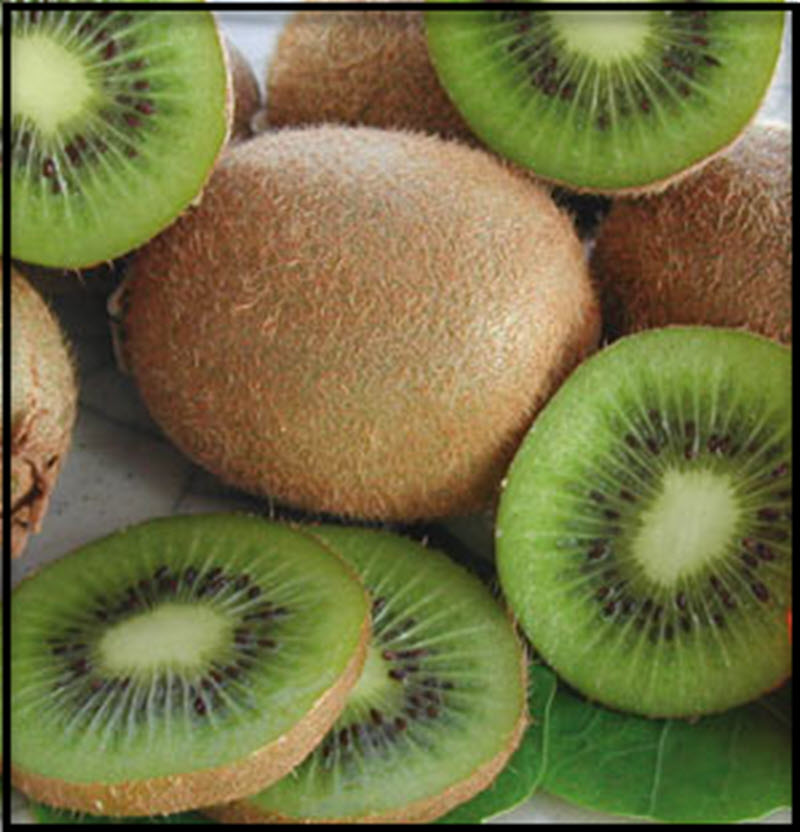
Bruno Kiwi
Bruno Kiwi is another Kiwi variety that is large but appears to have a cylindrical shape. The skin is brown with lots of surrounding hairs.
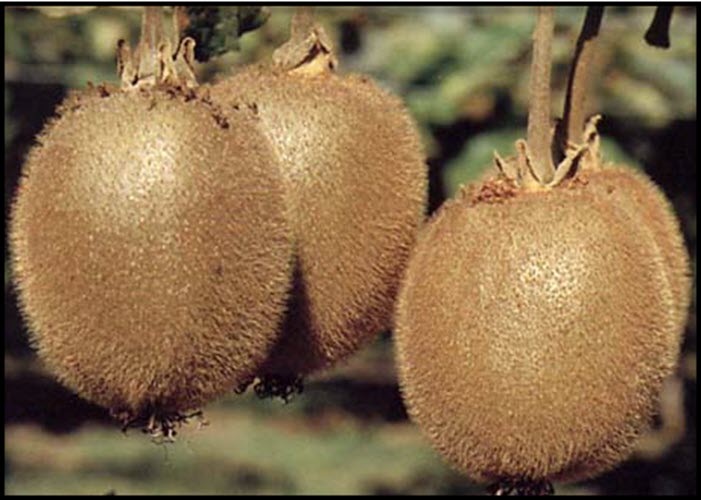
Jenny Kiwi
These are self pollinating kiwis and considered to be hybrids. During Springtime, the kiwi vines blooms flowers that are yellow-colored and smells good too. In summertime or early fall, the kiwi usually matures and produces a sweet and juicy fruit.
The flesh of Jenny Kiwi is green and edible black seeds.
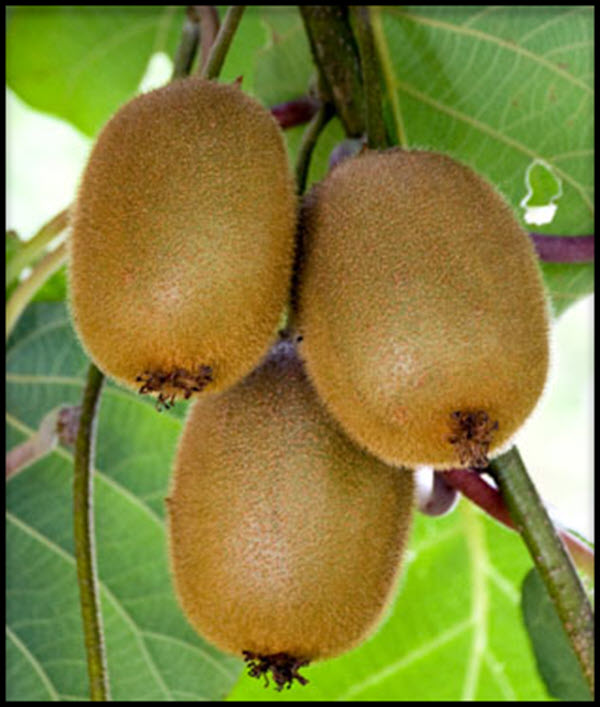
Vincent Kiwi
These are large-size egg shaped fruit that taste like strawberry.
Vincent Kiwi are female vines and needs male vines for pollination. It thrives well in warm climates and usually ripens in months of October. If you also noticed, the leaves of Vincent Kiwi appears to be heart shaped with white (creamy) flowers.
Purple (Red) Kiwi
Purple or Red Kiwi, latin name of Actinidia Melanandra is a native plant in China, specifically in regions of Yunnan, Sichuan and Hubei.
Purple or Red Kiwi has a uniquely purple and fuzzy skin.
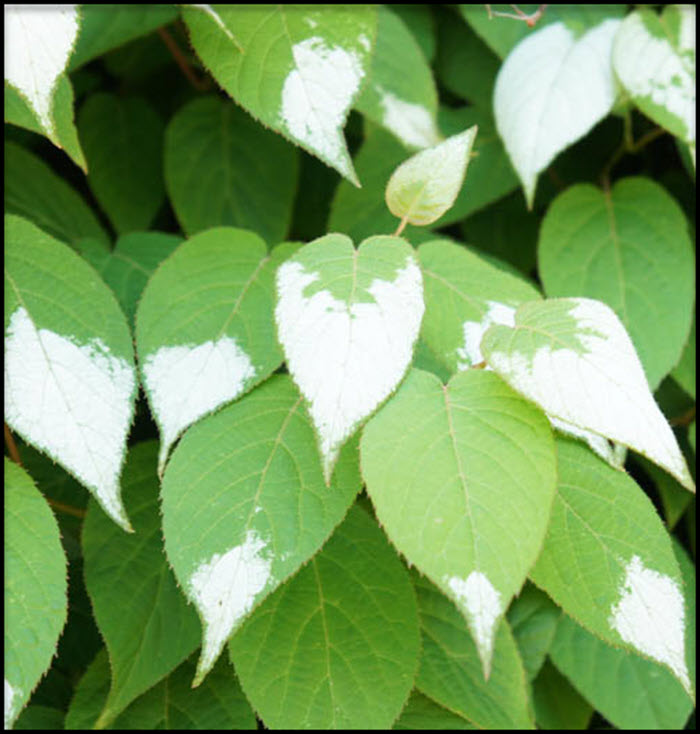
Silver Vine Kiwi
Silver Vine or Latin name as Actinidia Polygama appears to have green leaves that are heart-shaped, though the tips of the leaves are silver. Flowers produced are appears to be cup-shaped with an adorable smell.
Silver Vine produces small, egg-shaped fruit that is color orange.
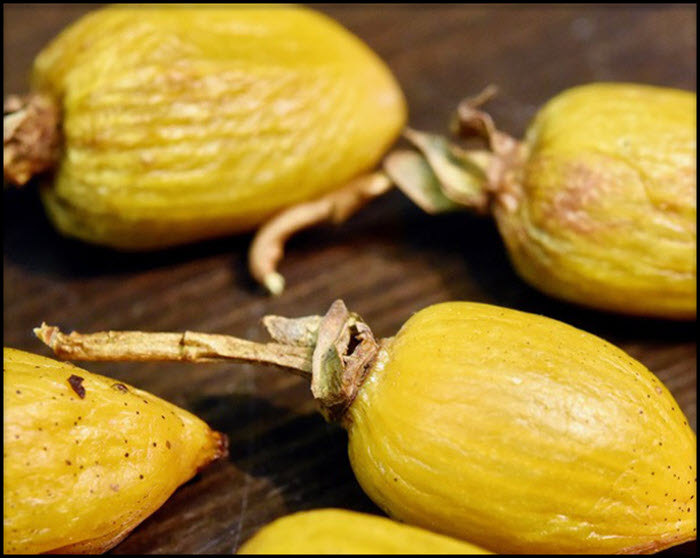
Hot Pepper Silver Vine Kiwi
Hot Pepper Silver Vine Kiwi has a uniquely shaped pepper fruit. Similar to pepper, it is also spicy (slight) but still tastes sweet.
To pollinate this variety, it must be paired with a male Pavel Silver Vine Kiwi.
Pavel Male Silver Vine Kiwi
Since it is a male vine, it does not produce kiwi but should be paired with a female vine. Generally a Male pollinator. Best paired with Hot Pepper silver vine kiwi and Vera Pride Silver wine for pollination.
Vera’s Pride Silver Vine Kiwi
These type of Kiwi produces large fruit that is orange in color. The fruit has a sweet taste.
The female flower of vera pride silver vine appears to be white, large and has a great smell. Paired with Pavel Male Silver Vine for pollination.
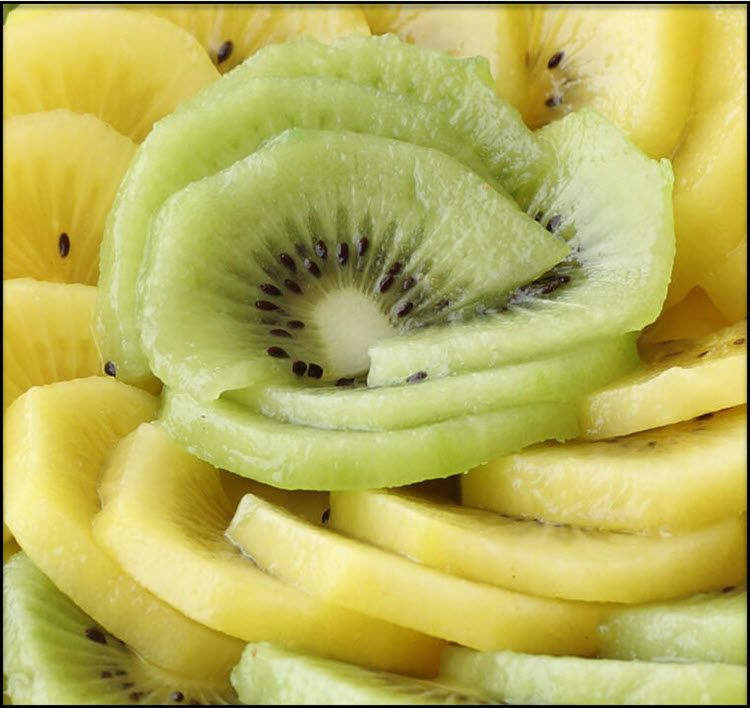
Chinese Gooseberry Kiwi
Actinidia Coriacea is the latin name for Chinese Egg Gooseberry. It also known for as Zhong Hua Kiwi or just Chinese Gooseberry.
It is characterized as oval-shaped or round-shaped fruit with flesh that varies in color and includes green, yellow-green or yellow.

Jing Li Kiwi
Also known for as the Northern pear gooseberry. It is an oval-shaped kiwi with green flesh. The outer skin appears to be color brown and are hairless.
Ruan Zao Kiwi
Also known for as Soft date gooseberry. It is relatively small but has a sweet taste. The flesh is green and used mostly in making jams or preserves.
Mao Hua Kiwi
Mao Hua Kiwi has green and sweet flesh. The skin has loose hair surrounding the fruit. It leaves are thick and appears to be oval-shaped.
Huang Yan Kiwi
Huang Yan Kiwi is a cylindrical shaped kiwi fruit with white or yellow flesh. The skin has fine and smooth texture. Though the color of the skin is a lot darker than the rest of the Kiwi Varieties.
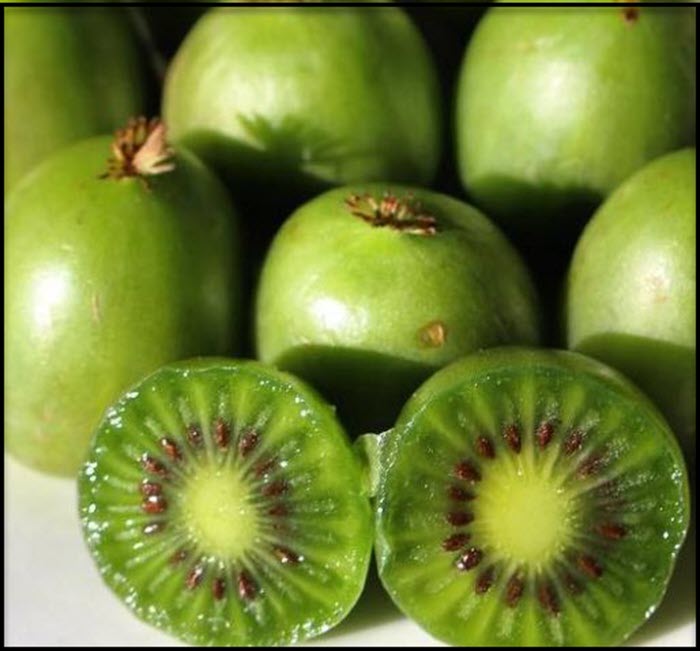
Kiwi Berries
Kiwi Berries bears a resemblance to a grape (grape sized fruit) more than it does to kiwi. The skin appears to be thin, green and smooth.
Because of its small size, it is often named as Baby Kiwi, Grape Kiwi and Dessert Kiwi.
FAQs
Yes, Kiwi skin are edible and yes you can eat them. Just make sure to wash the fruit first before taking a bite.
Kiwi are high in antioxidants and high in fiber content. It is also rich in Vitamin C that helps improve our body’s immune system to prevent diseases. High in fiber helps in digestion.
Yes, the middle of the Kiwi can be eaten. The core, that typically consists of the tiny black seeds, located at the middle. The seeds on the core are also edible. Though taste is slightly different than that of the flesh.
The best time to plant Kiwi vines is shortly after spring time, wherein frosting can be prevented. Kiwi vines usually bears fruit after 3 to 5 years from planting.
Tips for preparing Planting site
When planning to plant and grow Kiwi vines, it is important to choose and prepare your planting site to ensure it will produce Kiwi fruits.
- Make sure to choose a spot where it can get most of the sun but at the same time an area away from possible damage caused by wind.
- Thrives in well-drained soil, consider that one too.
- Since these vines slowly grows, make sure to support the vines. The vines usually grows up to 20 feet long and 15 feet wide. Usually bears 100 lbs. of Kiwi fruit.
How to plant Kiwi Vines
A male and female plant is needed for pollination, hence the female plants bears the fruit. As mentioned, for every 6 female plant, there should be one male.
When planting, make sure Kiwi vines are between 10 to 15 feet apart from each other. The depth should be just enough to cover the roots, though if the roots are long enough you can just trim the roots.
Conclusion
Each of the mentioned types of kiwis differs and varies with size, color and taste. Though all are the same kind of fruit, but of different variety. We hope that this guide has helped you understand the difference and similarities of Kiwi Fruits.

